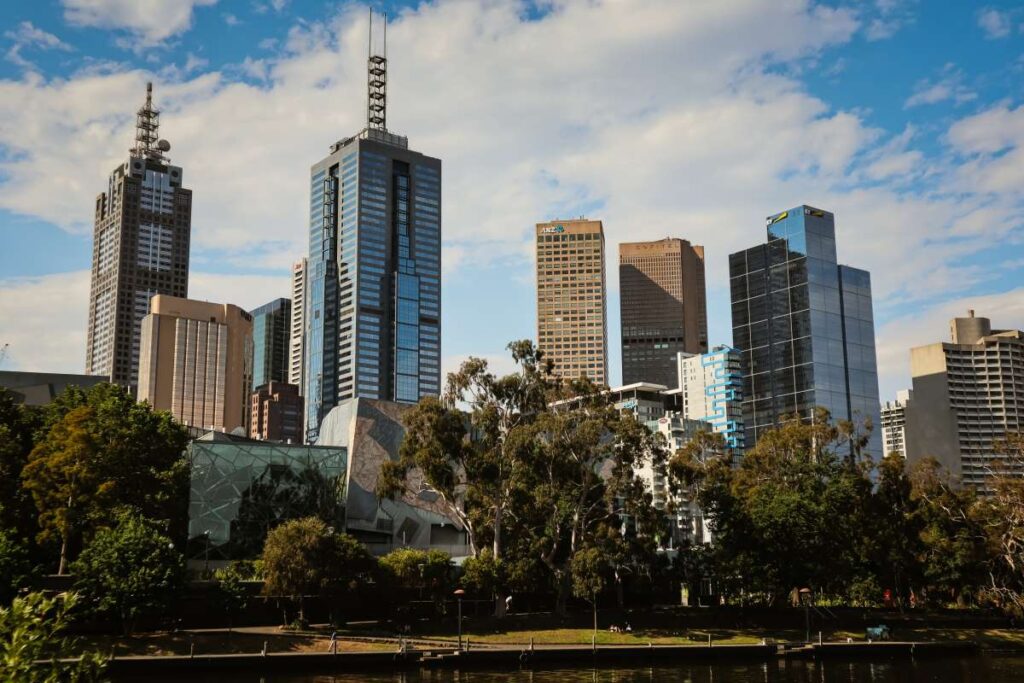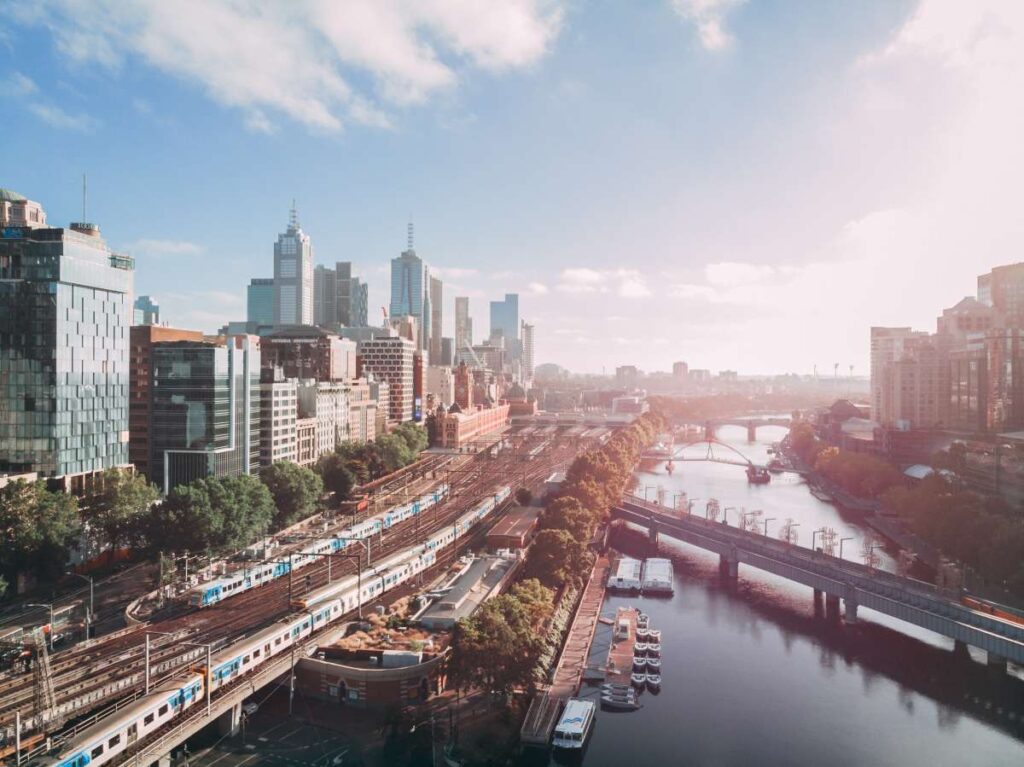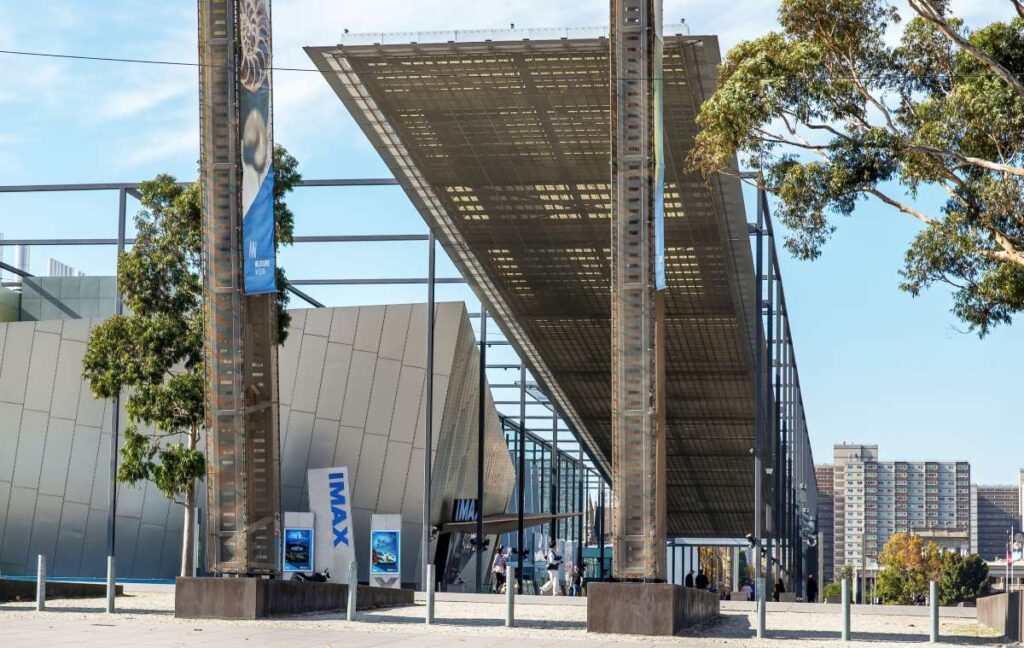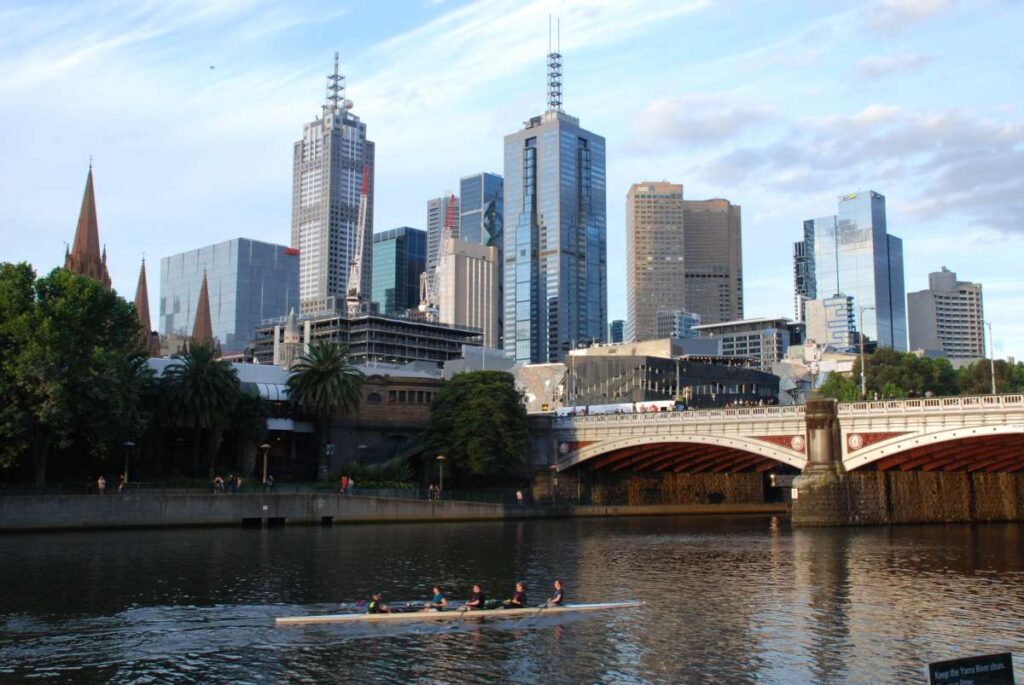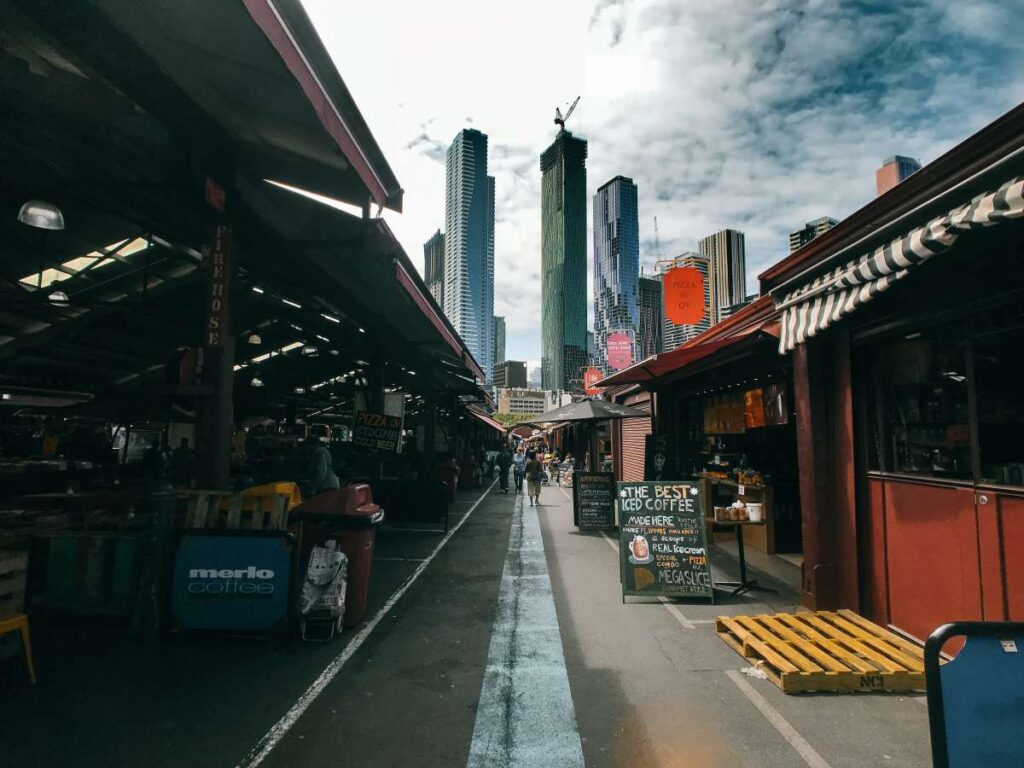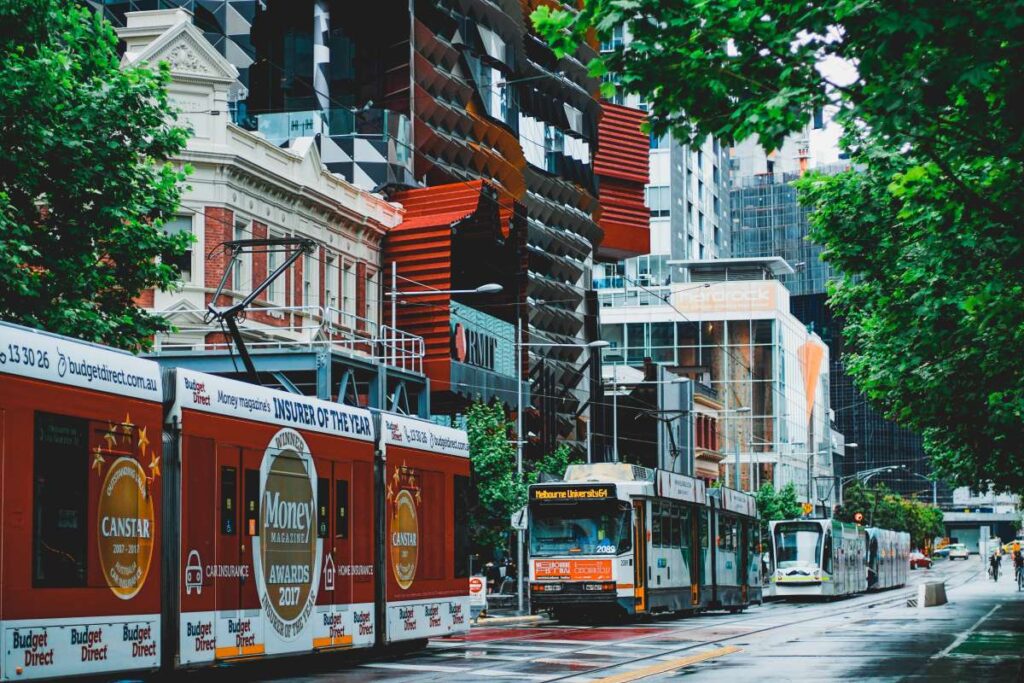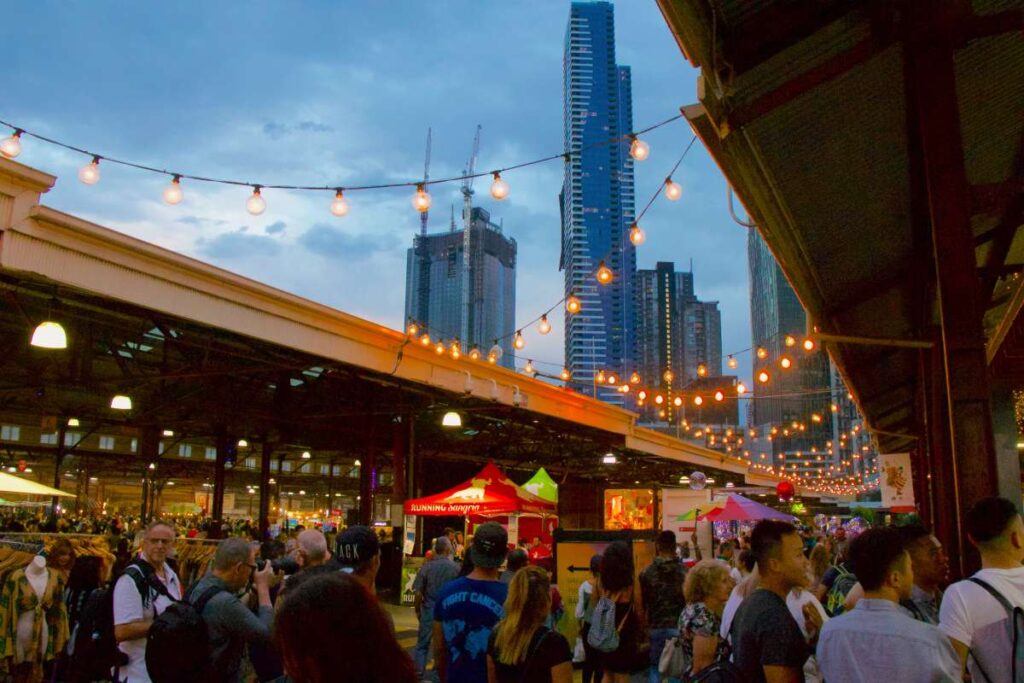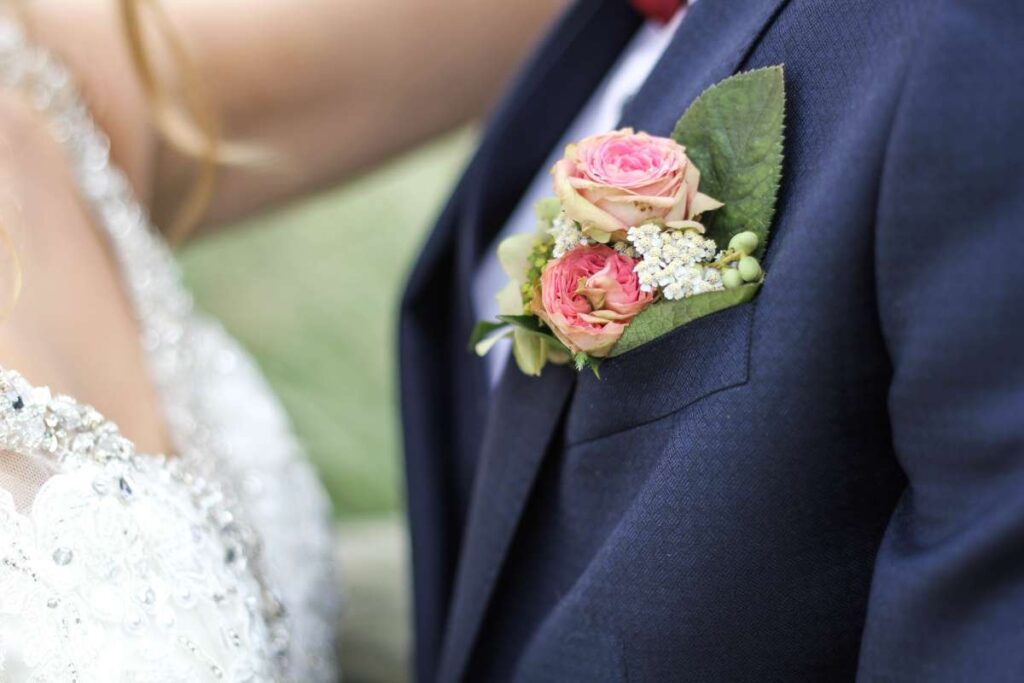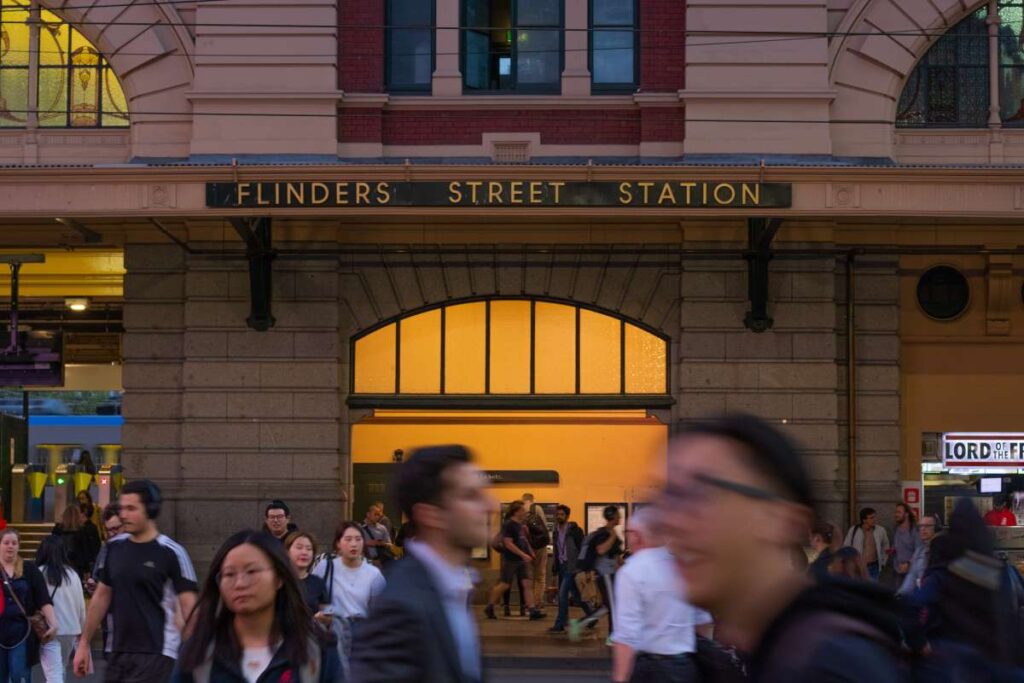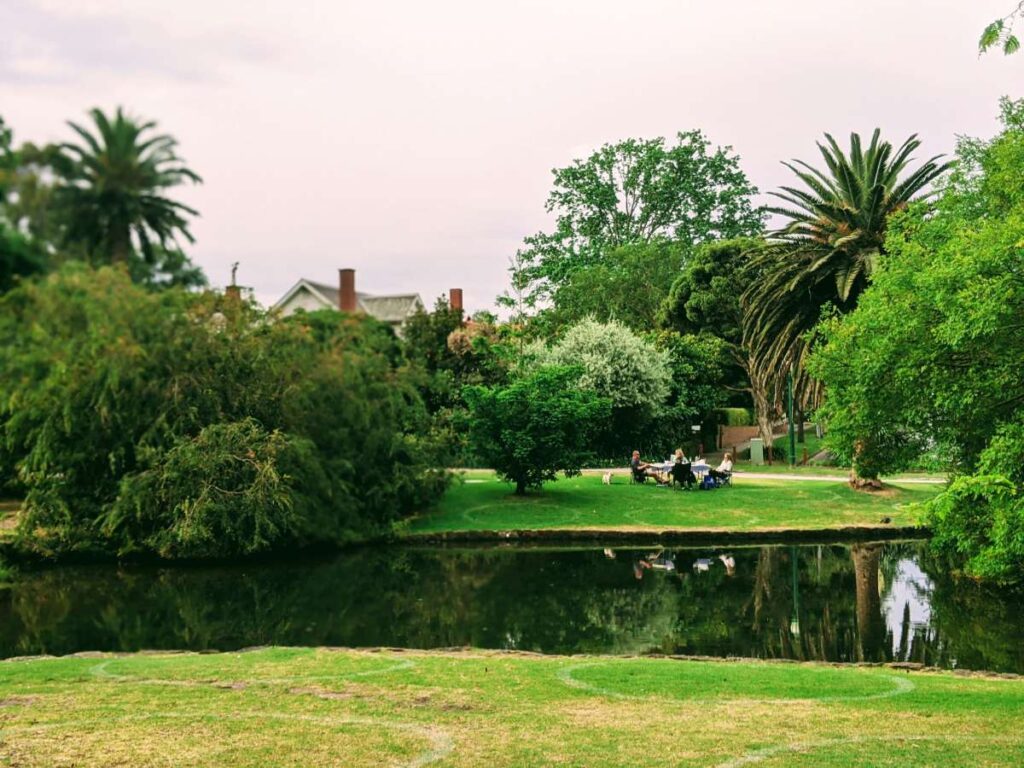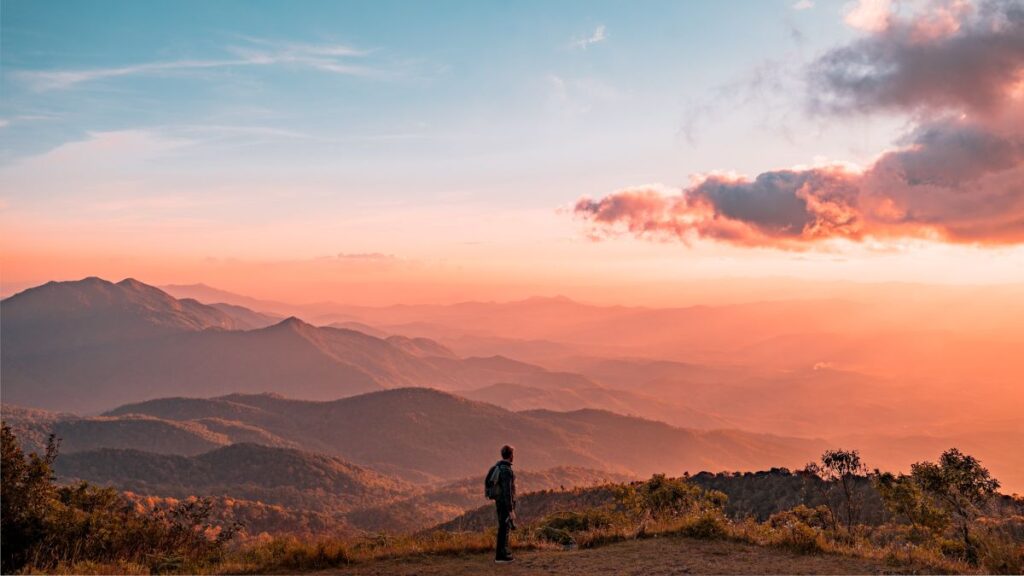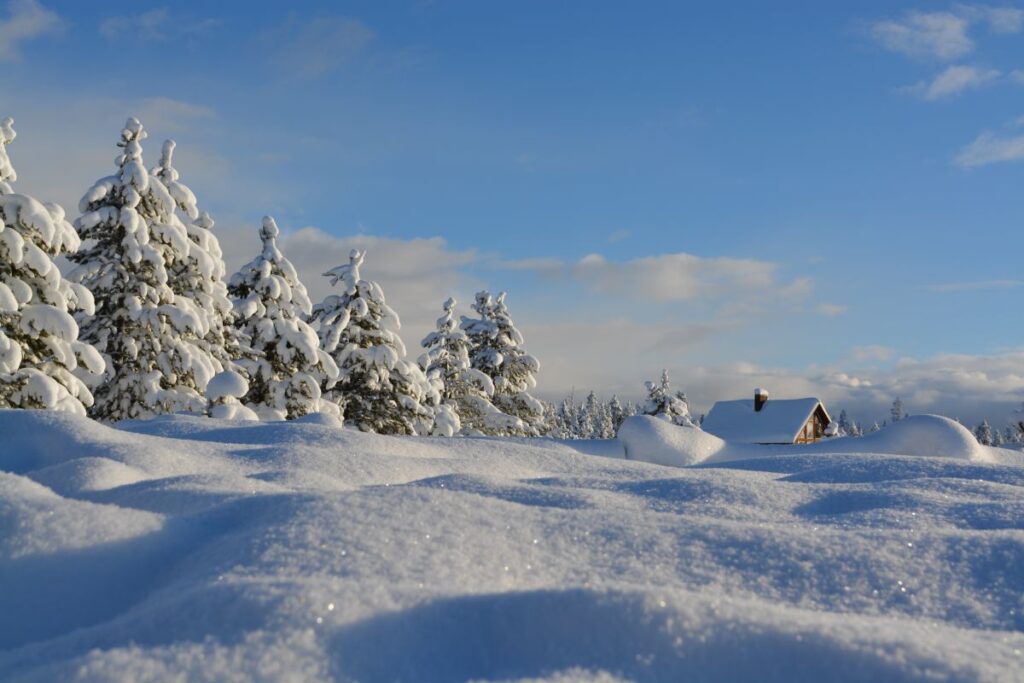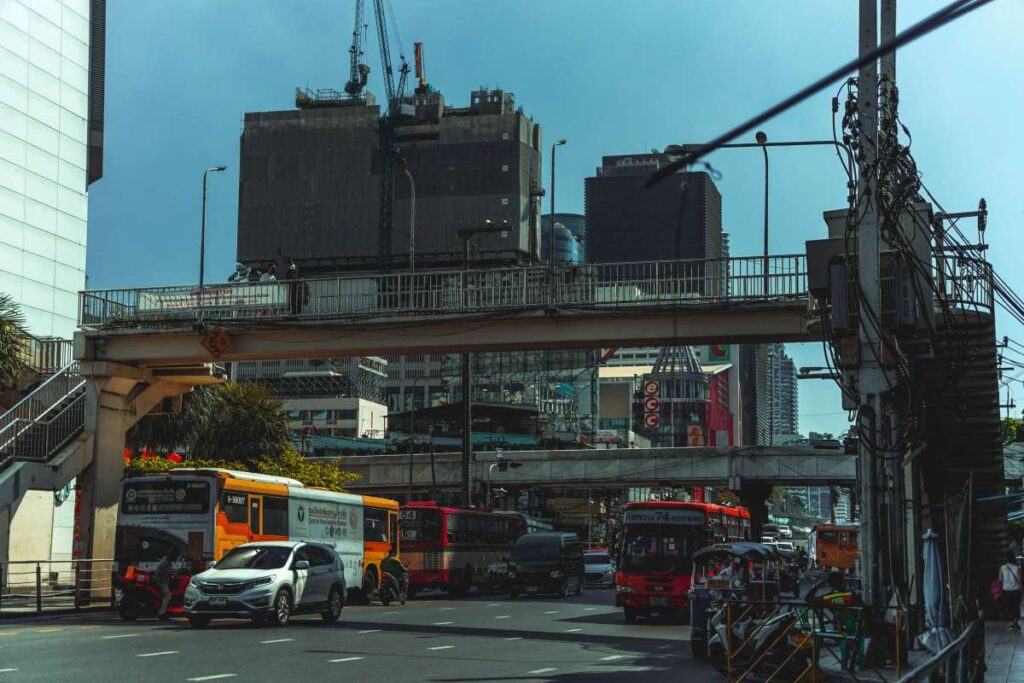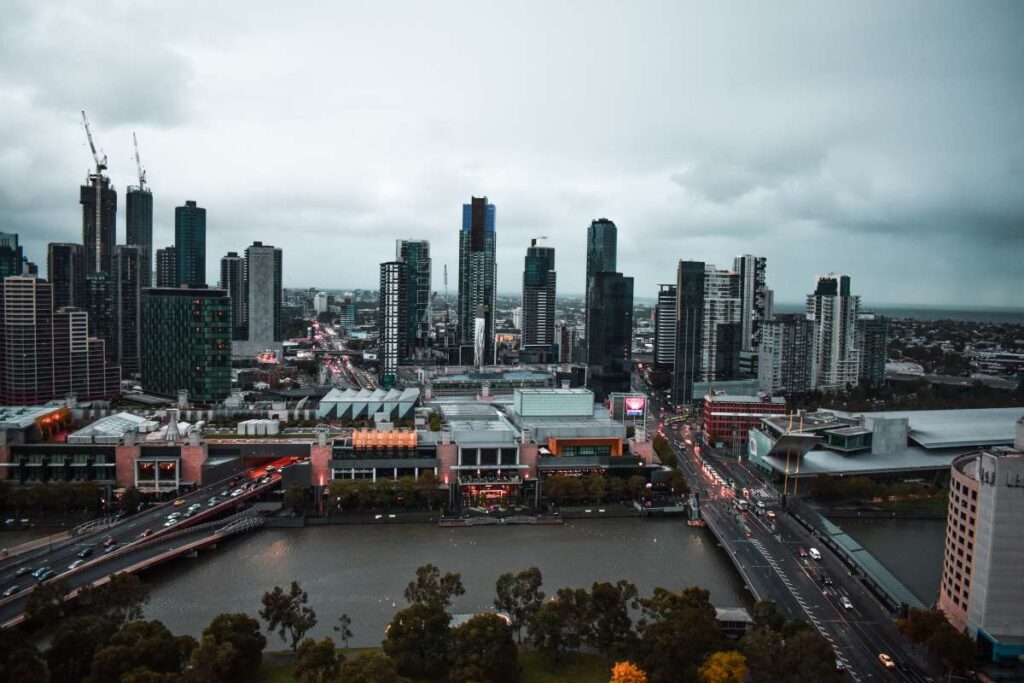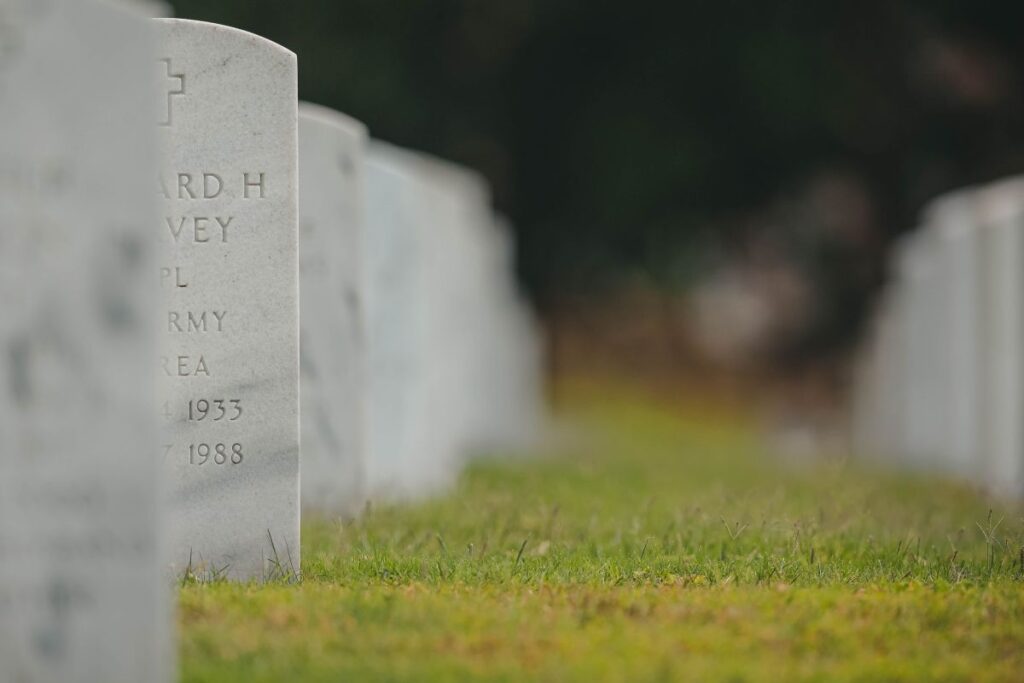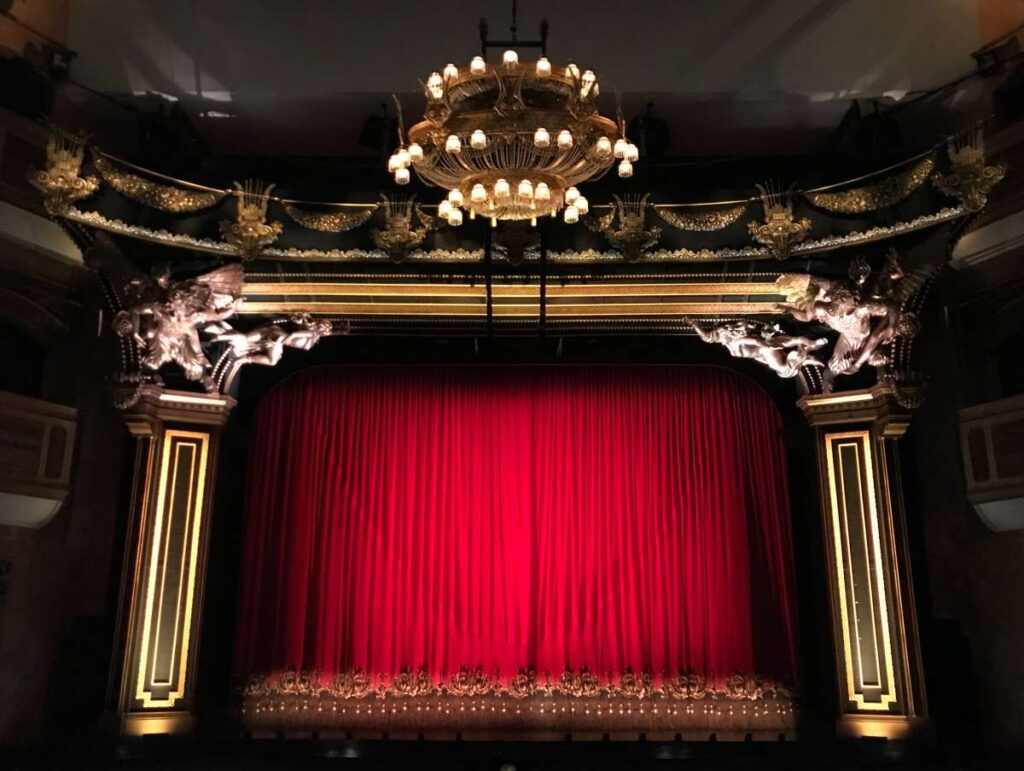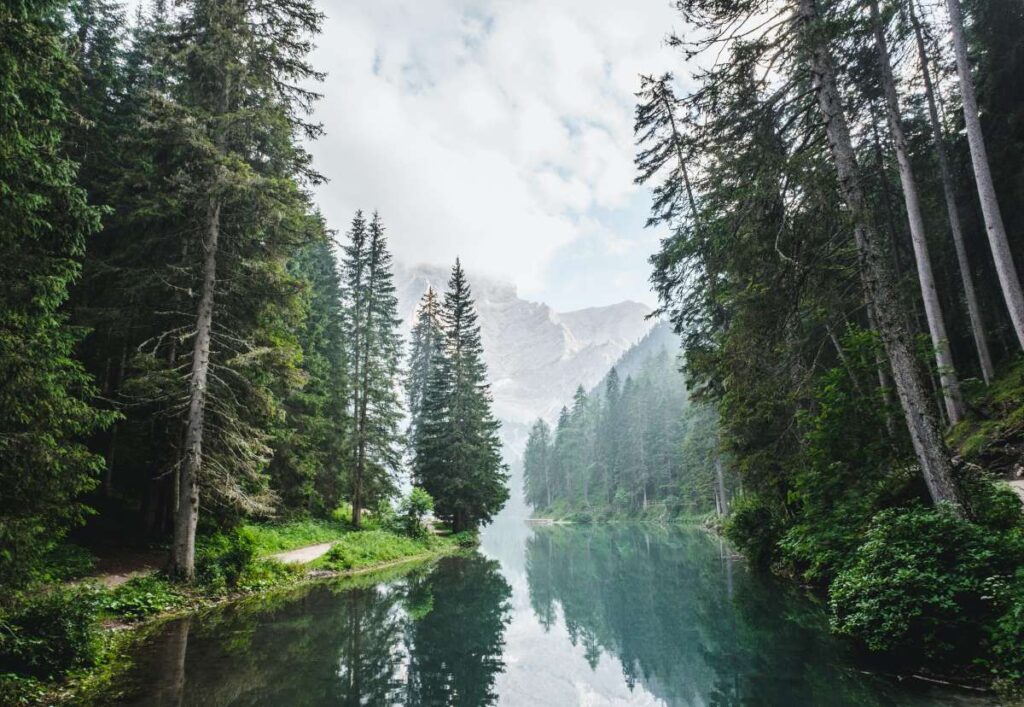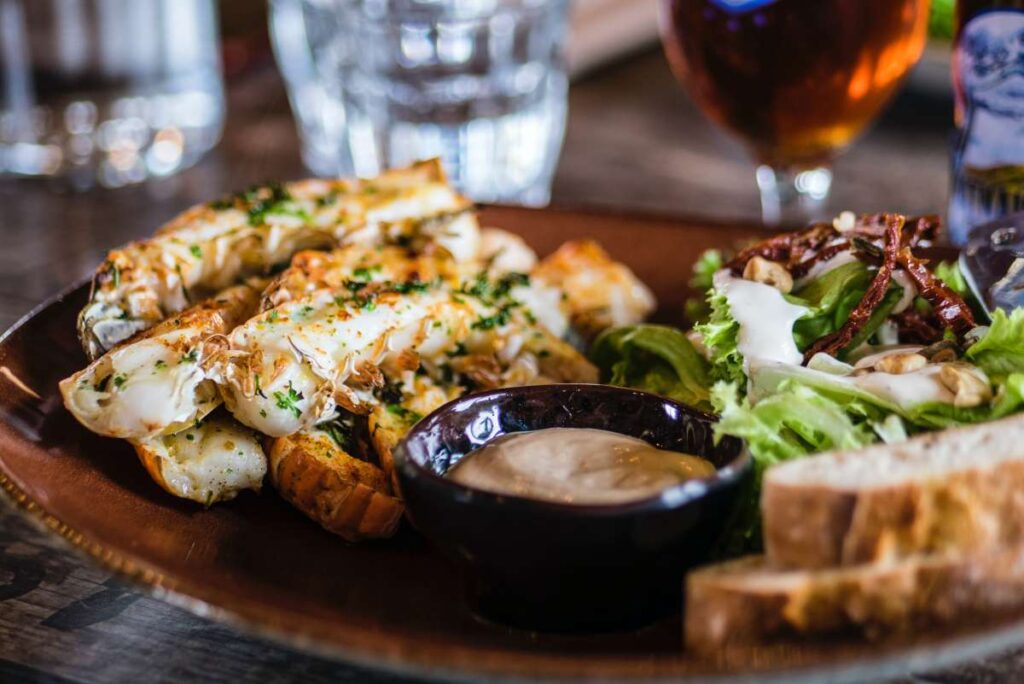Trees are abundant in Melbourne, making it one of the most beautiful and desirable places to call home in the world.
The abundance of greenery provided by these trees is a big reason why so many people love calling Melbourne home.
Trees are the longest-living species on Earth and a valuable natural resource. It's tough to imagine what life would be like if we didn't have trees. Besides being absolutely necessary to all forms of life, trees also add a stunning aesthetic to the world around us.
Since their evolution around 385 million years ago, trees have tirelessly served as resourceful engines to improve the health and happiness of life on Earth. The ecological benefits of trees help turn the planet into a thriving paradise for all forms of life.
In metropolitan areas, trees play an especially important role in improving people's health by trapping dust, dampening noise, and scrubbing the air of harmful chemicals. Trees prevent flooding and soil erosion, have great medical value, and reduce the global warming rate through absorption of carbon dioxide and storing it in their wood throughout growth.
Various tree species, suited to various climates and geographies, have been generously provided by Mother Nature. The land, weather, and water resources all play a role in these differences. The fact that every tree is different means that various species of trees require varying environmental conditions to thrive. To metropolitan areas, trees in general and their significance and history in particular are astounding in their diversity.
Do you know, however, that most of Melbourne's natural splendour is due in large part to Australia's numerous magnificent native tree species? Let's jump right in and find out what makes Melbourne's common trees so special as a geographical feature.
FAQs About Melbourne
Oak trees are one of the most common tree families globally; their wood is very hard and durable, and resistant to most diseases. Oak trees come from the genus Quercus of which there are over 90 different species.
Fruit trees, including Dwarf Fruit trees suitable for Melbourne, include Apple Trees, Lemon Trees, Peach Trees, Plum Trees and some species of Avocado Trees. You may be surprised to know that fruit trees, including Macadamia Nut trees, will grow well in Melbourne.
Sweet Mediterranean Orange (Parramatta Orange)
A Navel x Valencia cross suited to Melbourne. This sweet orange grows on a vigorous tree and produces a medium-sized fruit that contains only a few seeds.
Best climate: unless you live in a cold climate zone such as mountain areas, cool inland tableland districts such as Young and Orange in NSW, or cool parts of Tasmania or Victoria, you won't have much luck growing cherries.
Research shows that the trees likely to perform in Melbourne's warming climate include Moreton Bay Figs, Jacaranda, Sweet Gums, Lemon-Scented Gums, Queensland Bottle Trees, Mexican Hand Trees, Bunya Pines and Salmon Gums.
Standard Trees of the Melbourne Area
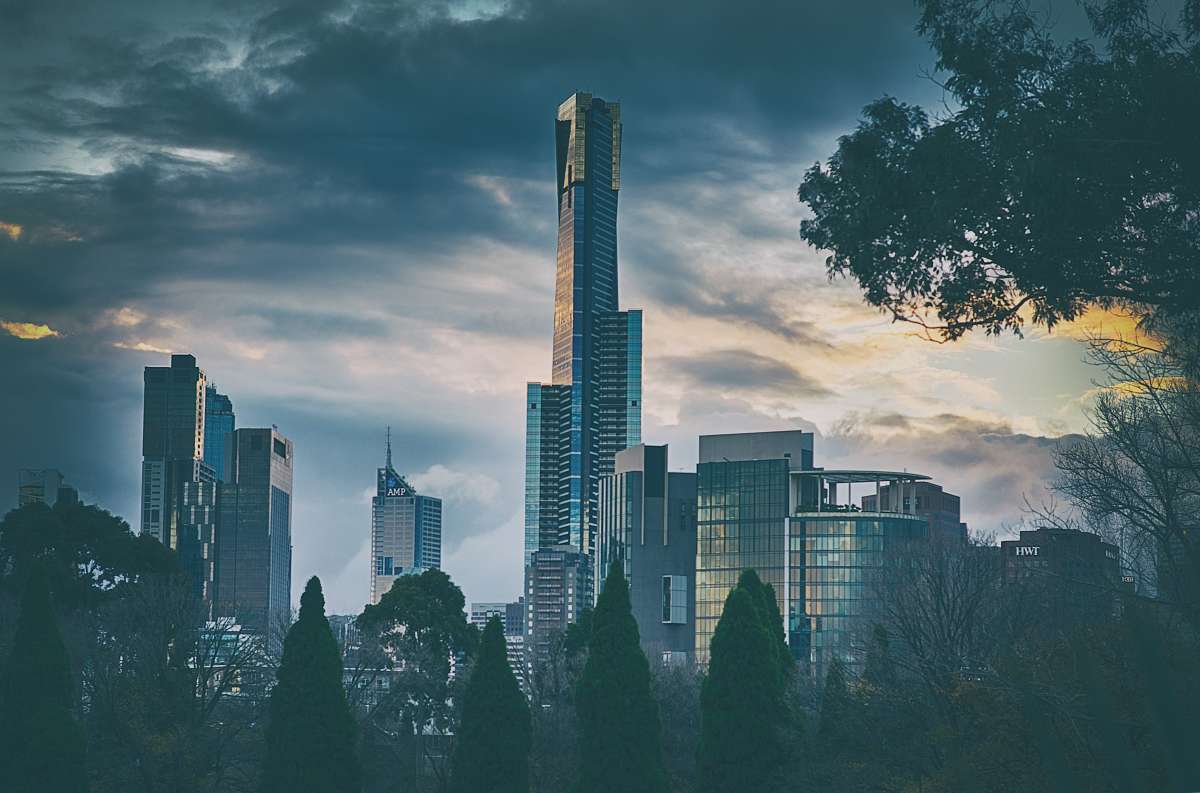
Trees maintain a great environment with green foliage, rich hues, and attractive leaves. The abundance of native trees in Australia is common knowledge among environmentalists.
That's why gardeners and homeowners need to learn about these trees. It's hard to find a tree in Melbourne's central business district that isn't both aesthetically pleasing and functionally integral to the city's overall landscape. This article will examine some of Melbourne's most well-known native trees and discuss how they might improve your garden.
Eucalyptus
In addition to providing food and shelter for a wide variety of Australian wildlife, Eucalyptus also boasts vast therapeutic capabilities that can benefit humans. Because it tends to secrete a gum-like substance if its bark is damaged, eucalyptus trees are sometimes called "gum trees."
Trees from the eucalyptus family can range from quite small to quite large. You can find them up to 20 metres tall in Melbourne parks, avenues, and streets.
Although young Eucalyptus under roughly 1.5 m tall is not resistant to severe frosts, exposed sites are ideal places to grow it. Moist-to-dry coastal sands are perfect for the development of Eucalyptus trees. They prefer sandy to clayey soils but can thrive in clay-rich environments.
Eucalyptus leaves are susceptible to dusty fungal disfiguration if grown in damp air, but this unsightly fungus rarely causes significant damage. Some tropical species of Eucalyptus, albeit still the majority, lose their leaves when the dry season ends.
There is a wonderful variety of Eucalyptus trees and other plantings in Melbourne, and all these trees have the propensity to grow quickly. Compared to other native tree species in Australia, Eucalyptus trees grow quickly and account for a disproportionate share of the country's wood supply.
The oil extracted from Eucalyptus trees is useful in aromatherapy for treating aches and pains in the muscles and joints, and it also has cleaning applications. In addition, evidence suggests that using eucalyptus oil can help strengthen the immune system. However, despite all of Eucalyptus' usefulness and adaptability, the trees are notorious water wasters and often prevent the growth of other plants due to the amalgams they emit.
Elm
Magnificent elm trees offer welcome shade and a stunning natural backdrop. Many of Melbourne's parks, boulevards, and gardens are dominated by elm trees. This is primarily because they are resilient and thrive in the harshest urban settings. The second reason they've been planted is for the beauty they bring to an area, helping to keep it looking refined.
The genus Ulmus includes deciduous and semi-deciduous tree species, referred to as elms. The leaves of elm trees are well-known for their characteristic fall colouration of orange and yellow before falling from the tree. The elm tree is a fast-growing giant that, in some situations, can live for a century.
Elms require fertile, well-drained, and watered soil that receives at least some direct sunlight. Elm trees may adapt to either rainy or dry conditions. Due to their versatility, Elm trees require minimal care.
However, the Elm Leaf Beetle poses a significant concern because it is the primary vector of Elm tree diseases. In addition, damage by the Elm Leaf Beetle prevents photosynthesis, threatening the future of the majestic Elm tree.
Elm trees are valuable for more than just the wood, which can be used for anything from building boxes and baskets to constructing furniture and hockey sticks to creating veneer and wood pulp or even boosting a woman's fertility.
Platanus
You may find Platanus, often known as planes and plane trees, nearly anywhere in Melbourne due to its high tolerance to weather extremes and air pollution.
Although Platanus aren't native to Australia, they add so much to Melbourne's charm with their vast distribution and stunning appearance. A Platanus tree is a huge, deciduous tree with a long lifespan and a spreading crown that gives it a unique and attractive appearance.
The height of a fully mature Platanus tree is 30-50 metres (98–164 ft). These trees can be identified by their scaly bark, wide trunk, lobed leaves, and round fruits and flowers.
Due to their small water requirements for existence, they require relatively less care compared to certain other urban trees. Because of their versatility, these trees are a popular ornamental option for Melbourne's gardens and landscapes.
The Platanus tree can be used to alleviate symptoms of both diarrhoea and toothache. The bark of Platanus trees can be boiled in vinegar for medicinal purposes. Conjunctivitis, as well as other inflammatory disorders, benefit greatly from the use of bruised Platanus leaves. The dye can be extracted from the stems and roots. Lacewood or Platanus wood can be fashioned into high-quality, attractive interior furniture.
Banksia
Although not indigenous, southern Australia is home to a diverse collection of Banksia, numbering in the 60+ species range. Beginning in 1700, when British settlers introduced it to Australia, Banksia has been a part of the local flora for centuries. So it didn't take long for this tree to become a staple in front yard landscaping and other high-profile areas. Banksia, a plant with flowers resembling spiky corn, can be found throughout Melbourne.
Plantations of Banksia, a type of Australian native tree, may be found throughout the city, varying in height from dwarf shrubs to towering trees up to 25 m. The flower heads of several species like Banksia are very striking. This abundance of blooms is a magnet for a wide variety of winged creatures and rodents. When planted in a garden, Banksia trees are a surefire way to attract native wildlife.
This tree prefers full sun and soils with good drainage. Light pruning is effective for most Banksias. Some species have shown a strong liking for high humidity or rainfall in summer, allowing them to thrive in most of Australia's temperate regions.
Bottlebrush Willow
The average height of a Willow Bottlebrush tree is just 7 metres. This tree has a thick growth pattern and is prized for the beautiful, brilliant green foliage that resembles a willow.
The Willow Bottlebrush is one of Melbourne's most stunning trees because it combines spectacular new growth of brilliant pink foliage and creamy-white bottlebrush blossoms. These 5-centimetre-long blooms normally occur on this tree in the late spring.
The paper-barked trunk of a Willow Bottlebrush is a lovely cream and tan colour. Because of their relatively small size, Willow trees are ideal for planting in places with height restrictions.
This tree can thrive in both flooded and extremely dry soils. The tree's dynamic root system may lift the tar, however, if you cement it too close to a willow bottlebrush tree.
The willow bottlebrush's allure is not limited to its visual appeal. But it has medical uses as a diuretic for treating urinary tract issues, bed-wetting in youngsters, and urinary incontinence. In addition, among Australia's indigenous populations, floral nectar is a popular source of sustained energy.
Corymbia
The average height of a mature Corymbia is 35 metres. However, it can reach up to 50 metres in exceptional cases. Its natural habitat is the wet and dry regions of North Eastern Australia.
Various other names, including lemon eucalyptus, blue-spotted gum, and lemon-scented gum, know the tree. Depending on the view, the tree's bark is speckled, consistent, pale, or smooth.
Its narrow crown of leaves emits a distinct lemon scent and can be anywhere from white to copper. Thin, curled flakes of powdery bark can be lost from the smooth surface of the bark, which encompasses the entire tree from the ground up.
It's not only a beautiful tree; its leaves and stems may be used to distil a citronella-rich essential oil. In Kings Park near Perth, Australia, the avenue lined with these trees is a sight, yet eucalyptus trees are also known for the problems they may cause. Those trees, for instance, have become a noxious weed in Kings Park.
The Benefits of Trees
Most of us would consider trees solely aesthetic, something that was added for aesthetic purposes... they are more than that, though. They play a crucial role in the natural world.
Every tree contributes significantly to the air quality that we breathe. They play an important role in regulating and stabilising global climate and are a vital resource for thousands of species.
Keeping them in our gardens is quite advantageous.
Environmental Advantages
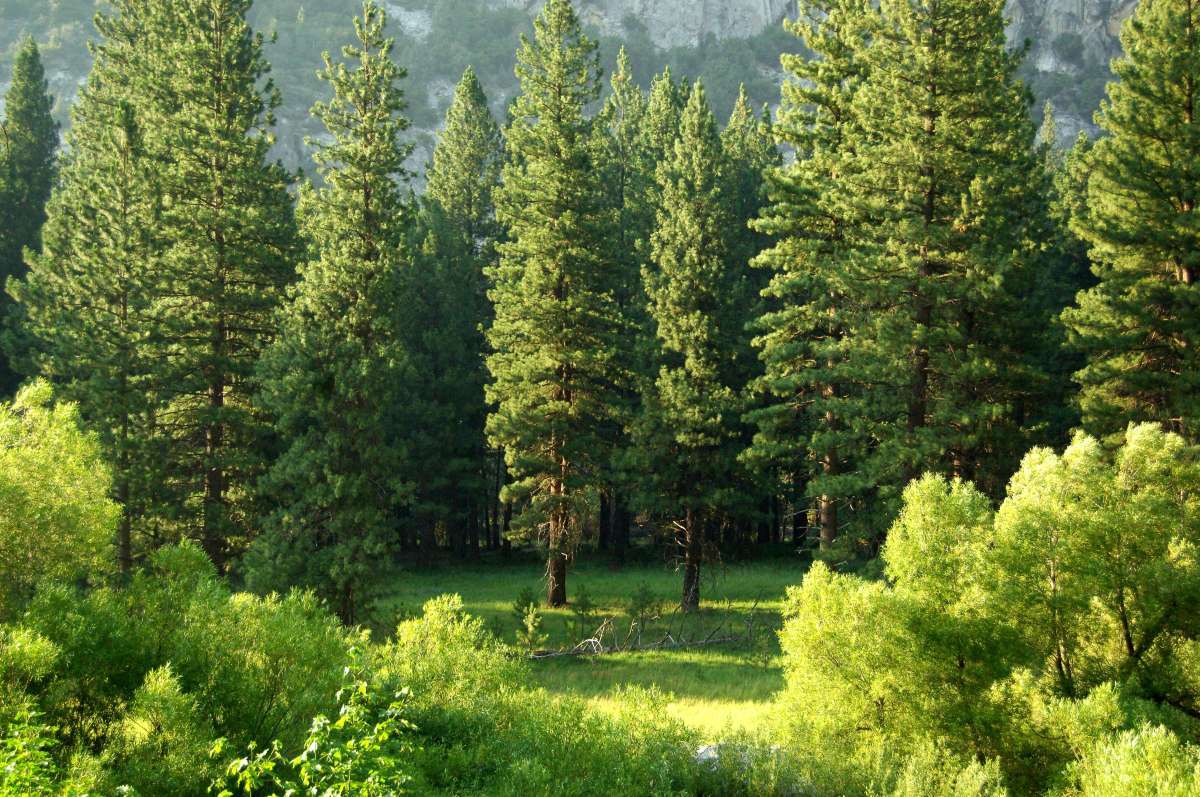
Buildings' energy efficiency can be increased if trees are strategically planted. By providing shade to the walls, windows, and roof, trees planted on the north side of the home can reduce internal temperatures by 6 to 12 degrees Celsius during the summer.
The healing rays of the winter sun can penetrate the leaves of a deciduous tree, making them the ideal choice. In addition, shading the walls and the roof together produces the most effective cooling effect. As such, large trees should be planted nearby but not too close to the house.
When using evergreen trees to provide shade for a house, they should be located on the house's eastern or western sides. They should be planted on the north side, with tall enough branches to let in as much sunshine as possible, even in winter.
A big, dense tree in front of your house in the winter can prevent up to 25% heat loss by deflecting the wind around it. Saving money on heating costs is an easy and cheap method to lessen your environmental impact. Be responsible and help the planet.
Some tree species have leaves that reach the ground. These are fantastic for use as both windbreaks and hedges.
Values from an Aesthetic Perspective
In contrast to a fence, which is less environmentally friendly and less long-lasting, strategically placed trees on your property can offer you complete privacy from prying eyes. The addition of a modest, well-placed screen is all that's needed to block out nosy neighbours.
Foliage-packed tree in as little as five years.
You can select one that fits your position, style, and demands from the many sizes and shapes available. Many trees have extremely decorative bark and curiously textured trunks, and the range of foliage and bloom colours are practically infinite.
Tree planting is not only a pleasurable pastime but also an enduring legacy. Since most species live for hundreds of years longer than humans, they could still be around then. The gift of a tree planted today will bear fruit for centuries.
Local Trees
The recent lack of rain explains why native trees are more popular than ever; they are particularly drought resilient.
In addition to being drought-resistant, fast-growing, and aesthetically pleasing, they provide essential shelter and food for native animals. Where would our feathery and furry friends find shelter if not for natural trees?
Each tree you plant that is natural to the area will provide shelter or food for various animals. Then, throughout the years, you can enjoy watching your garden grow and change as nature intended.
In recent years, growers have released superior cultivars to give gardeners options more suited to a suburban backyard.
These might outperform the original by being more compact or having more vividly coloured flowers. Plants like Eucalyptus ficifolia are grafted (instead of grown from seeds) to ensure the desired blossom colour.
Rare and Beautiful Trees
Whether you're a green thumb or not, you've probably appreciated a blooming Jacaranda, a blaze of orange leaves in the fall, or the graceful Magnolia flowers that usher in April.
The soil and climate of Melbourne are suitable for several exotic tree species.
While our northern neighbours envy our milder winters, some deciduous trees thrive here. In addition, the seasonal shifts provide a free way to insulate your home.
Like many native trees have been bred to thrive in urban settings, many alien trees have been produced in recent years to thrive in suburban settings. You can't claim lack of space as an excuse any longer. Even in containers, some trees could be kept to a height of 3 metres.
Develop Forests
It's possible you haven't considered using a fruiting, nut-bearing, or leaf-providing tree for shade and aesthetic purposes.
We keep a wide variety of productive plants stocked all year long. Again, solutions exist, such as lime trees, that are small by design. Many of these choices are also hardy and require little care. The annual chemical spraying is also out of the question. Several options exist for avoiding this. If you need help, please ask one of our nursery workers.
The feeling of accomplishment you get from eating an apple plucked from your tree is unparalleled.
Picking Out A Tree
There is a great variety of tree types and sizes throughout the world. Check your motivations for planting.
- If so, it must be for one of three reasons: shade, privacy, or protection from the wind.
- Is the space you're working with a little confining or expansive and freeing?
- When do you need it by?
- Want multiple?
Just take a moment and contemplate these concerns. Since this, you won't have to worry as much about scraping the project ten years from now because it turned out to be something other than what you had envisioned. Too many trees planted too closely together, annoying falling leaves and a driveway torn apart by tree roots are all common tree-related complaints. Keep in mind that the tree may also affect your neighbours' property.

The Tree-Planting Process
Planting a tree is a simple process. However, spending some time and energy prepping the spot beforehand will provide a much healthier & faster-growing specimen. The ideal dates to plant are often in the spring and fall.
By doing so, you can escape the sweltering heat of summer and the cold of winter. Having a warm season to lay the roots in guarantees an early spring. A single hot, dry day in the summer is all it takes to kill most plants, so keeping up with watering until fall is essential.
It's also beneficial to plant in early fall when the soil is still warm enough to encourage rapid root growth. In the same vein, there needs to be plenty of water available. Planting in the spring is suggested if you live in areas with frequent frost.
Conclusion
It's general knowledge that Australia has many native trees, so gardeners and homeowners need to learn about them. This article discusses the benefits of planting some of Melbourne's most well-known native trees in your yard. A vast range of Australian fauna relies on eucalyptus trees for survival, and these trees also have therapeutic uses for people. Melbourne's parks, avenues, and streets are all home to these modest, massive sculptures. They thrive in locations with a lot of clay, although they prefer the sandy soils found around the shore.
Dusty fungal disfiguration is possible if they grow in humid air, but this unattractive fungus rarely causes substantial damage. Though versatile and beneficial, they squander a lot of water and often stunt the development of nearby vegetation by emitting a toxic compound.
For their durability and aesthetic appeal, elm trees are a common choice for Melbourne's parks, boulevards, and gardens. Elms refer to the deciduous and semi-deciduous tree species in the genus Ulmus. When autumn arrives, the leaves on elm trees become bright orange and yellow before dropping to the ground. Elm trees need moist, well-drained soil and regular watering in full or partial sun to thrive. They can withstand either wet or dry weather. The Elm Leaf Beetle is a major reason for alarm because it is the primary transmitter of illnesses that affect elm trees; furthermore, the beetle's feeding habits prevent photosynthesis from occuring, thereby jeopardising the long-term viability of the stately elm.
An enormous deciduous tree with a long lifespan and a spreading crown, Platanus is commonly referred to as a plane or a plane tree. You may recognise these trees' scaly bark, broad trunk, lobed leaves, and spherical fruits and blooms. The bark of the Platanus tree, when boiled in vinegar, can be used to treat diarrhoea and toothache. All across Melbourne, you may find banksia, a plant whose flowers look like spiky corn, growing in sizes ranging from short shrubs to tall trees that can reach heights of up to 25 m. As one of Melbourne's most beautiful trees, the Willow Bottlebrush boasts breathtaking new growth of bright pink foliage and creamy-white bottlebrush blooms.
It grows well in waterlogged and severely dry soils, making it a good choice for areas with height limits. In addition to its attractive appearance, the willow bottlebrush has medical applications as a diuretic for treating urinary tract disorders, childhood bed-wetting, and urine incontinence. Corymbia is a mature tree that typically grows to a height of 35 metres but can grow to a height of 50 metres in ideal conditions. It has a small crown of leaves and a unique lemon aroma, and its bark can be spotted, consistent, light, or smooth. Unfortunately, eucalyptus trees are not only well-known for the citronella-rich essential oil that can be distilled from their leaves and stems.
Trees are vital to the environment because they improve air quality, moderate and stabilise the weather around the planet, and shield us from the sun's rays. For example, trees on the north side of a house can reduce summertime temperatures inside by as much as 12 degrees Celsius, greatly improving a building's energy efficiency. The eastern and western sides are the best spots for evergreen trees planted for shade. When planted on the north side, their branches should be high enough to allow light all year round. Trees can save heating expenses by as much as 25 per cent by redirecting the wind away from a building. Species of trees with low-hanging leaves are particularly useful as windbreaks and hedges. Planting trees is a rewarding hobby that leaves a lasting impression on future generations.
Trees native to an area are more likely to survive periods of drought, grow more quickly, and are more aesthetically beautiful. Growers have released improved cultivars in recent years, giving suburban gardeners more alternatives. Some exotic tree species do well in suburban Melbourne because the soil and climate are right for them. Some types of deciduous trees are well-suited for use as home insulation and thrive in this area. A fruiting, nut-bearing, or leaf-providing tree can establish forests for shelter and aesthetics.
Choose from a wide range of tree species and sizes from across the globe. Feel free to approach one of the staff members working in the nursery for assistance. Eating an apple you picked from your tree gives you a sense of pride that nothing else can match. Make sure you have a good reason for planting a tree, whether it is shade, privacy, or shelter from the wind. Think about the time frame you're working under, the amount of available space, and the potential impact on your neighbours' property
When the soil is still relatively warm in the spring and fall, it is optimal for planting since it promotes quick root growth and water is abundant. IfPlanting in the spring is your best bet if you reside in a location that is hit by frost frequently,
Content Summary
- Popular Trees in the Melbourne Area Trees keep the world looking lovely by producing lush, colourful foliage.
- Native Australian trees are plentiful and well-known in the environmental community.
- Hence, homeowners and gardeners need to gain knowledge about these trees.
- Trees in Melbourne's CBD need to be more aesthetically beautiful and functionally vital to the city's overall landscape.
- Some of Melbourne's most well-known native trees will be profiled, along with a discussion of how they may enrich your garden.
- The Eucalyptus tree is a source of sustenance and protection for many Australian animal species. It has impressive therapeutic properties that can be of great use to people.
- There is a tendency for eucalyptus trees to release a gum-like substance if their bark is ever broken, hence the alternative name "gum trees."
- There is a wide variety in size between the smallest and largest members of the eucalyptus family of trees.
- Parks, avenues, and streets throughout Melbourne include these trees, some of which can reach heights of 20 metres.
- Eucalyptus trees thrive on the moist-to-dry sands found along the coast.
- In Melbourne, you may find a wide range of beautiful Eucalyptus trees and other plantings, and nearly all of them have a rapid growth rate.
- Eucalyptus trees mature rapidly compared to other Australian tree species and supply a disproportionate amount of the country's wood products.
- The oil pressed from Eucalyptus trees has several uses, including cleaning and aromatherapy for relieving muscular and joint discomfort.
- Furthermore, there is evidence that eucalyptus oil can assist in bolstering the immune system.
- The majestic elm trees provide much-needed shade and provide a beautiful scene.
- Elm trees are commonly found throughout Melbourne in the city's green spaces, such as parks, boulevards, and gardens.
- This is mostly because they are hardy and can survive in the most challenging urban environments.
- For their aesthetic value, they have also been planted.
- Elms refer to the deciduous and semi-deciduous tree species in the genus Ulmus.
- When autumn arrives, the leaves on elm trees become bright orange and yellow before dropping to the ground.
- Elm trees are fast-growing giants that, depending on conditions, might live for a century or more.
- Elm trees need plenty of water, sunlight exposure, and good, well-drained soil to thrive.
- To some extent, elm trees can adjust to either wet or dry climates.
- Elm trees can be used for various purposes and require little maintenance.
- The Elm Leaf Beetle, however, is a major reason for alarm since it spreads Elm tree diseases.
- Moreover, the Elm Leaf Beetle's damage limits photosynthesis, which jeopardises the future of the stately Elm tree.
- Elm trees are valuable not only for the wood, which can be used to make anything from boxes and baskets to furniture and hockey sticks to veneer and wood pulp and even increase a woman's fertility.
- Due to its remarkable tolerance to extreme weather and air pollution, Platanus, also known as planes and plane trees, can be found anywhere in Melbourne.
- Even though Platanus aren't native to Australia, its widespread presence and beautiful beauty contribute greatly to Melbourne's appeal.
- Platanus trees are massive deciduous trees with a long lifespan and a spreading crown that makes them stand out from other trees in the forest.
- A mature Platanus tree can reach heights of 30-50 metres (98–164 ft).
- You may recognise these trees' scaly bark, broad trunk, lobed leaves, and spherical fruits and blooms.
- Their low water needs mean they may survive with less attention than other city trees.
- These decorative trees are often used in Melbourne's gardens and landscapes due to their adaptability.
- Both diarrhoea and toothache can be helped using parts of the Platanus tree.
- It must be cooked in vinegar to extract the therapeutic properties from Platanus tree bark.
- Crushed Platanus leaves are very effective in treating conjunctivitis and other inflammatory illnesses.
- High-quality, aesthetically pleasing furniture can be crafted from lacewood or Platanus wood.
- Many Banksia species—well over sixty—have been introduced and now thrive in southern Australia.
- British colonists brought Banksia to Australia in the early 18th century, and it has since flourished there.
- It was only a short time before this tree was ubiquitous in front yard landscaping and other high-visibility settings.
- You may see banksia across Melbourne, a shrub whose blossoms look like spiked corn.
- You may find plantations of Banksia, an Australian native tree, all around the city. These trees range in height from little bushes to soaring 25-meter-tall specimens. Several plant species, including Banksias, have very eye-catching flower heads.
- Many different kinds of birds and small mammals are drawn to these flowers.
- Trees of the Banksia genus, when placed in a garden, almost always draw in native animal species.
- This tree does best in well-drained, full-sun soil.
- Most Banksias respond well to minimal pruning.
- Species that prefer humid or rainy summers are well-suited to the temperate regions of Australia.
- Willow bottlebrush trees are at most 7 metres in height.
- This tree has a dense habit of growth and is much sought after for its attractive, willow-like, bright green foliage.
- New growth on the Willow Bottlebrush is particularly striking, with bright pink foliage and white bottlebrush flowers. This tree is among Melbourne's most beautiful.
- The late spring is when this tree typically displays its 5-centimetre-long flowers.
- Willow bottlebrushes have attractive cream and tan tones in their papery bark.
- Try a willow if you need to plant a tree but have a height limit.
- There's more to the willow bottlebrush's attraction than meets the eye.
- However, a diuretic can treat urinary tract infections, children who wet the bed, and incontinence.
- Moreover, among the indigenous people of Australia, floral nectar is a well-liked source of long-lasting energy.
- At maturity, a Corymbia often tops out at 35 metres.
- It occurs naturally in North Eastern Australia's wet and dry regions.
- It is also known as blue-spotted gum, lemon-scented gum, and lemon eucalyptus.
- The bark of the tree can appear either somewhat speckled, uniform, pale, or smooth, depending on the angle from which it is viewed.
- Its fragrant, thin crown of leaves can range in colour from pale white to deep red.
- The citronella-rich essential oil is found in leaves and stems, making it a useful resource beyond its aesthetic value.
- While the sight of an avenue lined with eucalyptus trees at Kings Park in Perth, Australia, is impressive, these trees have a reputation for posing several challenges.
- For example, those trees have evolved into a nuisance in Kings Park.
- Trees are more than just a pretty sight; we see them that way because we were told to.
- They are vital to the functioning of the natural world.
- Everyone has a huge impact on the air quality we breathe.
- Thousands of species rely on them, and they play a crucial role in regulating and stabilising the world climate.
- It's a good idea to keep them in our gardens.
- Strategic tree planting can improve a building's energy performance.
- Home interiors can be cooled by as much as 12 degrees Celsius in the summer if trees are planted on the north side of the house to provide shade for the walls, windows, and roof.
- Deciduous trees are great because their leaves allow the healing rays of the winter sun to enter the tree.
- The house seen and western sides a the best spots for evergreen trees planted for shade.
- When planted on the north side, their branches should be high enough to allow in sight all year round.
- By deflecting the wind around it, a large, thick tree in front of your house can reduce heat loss from your home by as much as 25 pence per winter.
- Cutting back on heating bills is a simple and inexpensive way to help the planet.
- Do your part to save Earth by acting responsibly.
- Certain tree varieties have floor-length leaves.
- UsefuThese excellent landscaping elements are useful in blocking the wind and creating a privacy screen; strategically placed trees on your property can offer you complete privacy from prying eyes in confidence, which is less environmentally beneficial and less long-lasting.
- Putting up a small screen is a strategic wonder to privacy from prying eyes.
- Full Fulleaves in as little as five years.
- From the many different options in terms of form, you can pick the one that best serves your needs and interests in your current position.
- Planting trees is a rewarding hobby that leaves a lasting impression on future generations.
- A tree planted now will produce fruit hundreds of years from now.
- Recent drought conditions have boosted interest in native trees, which can withstand water shortages.
- In addition to being attractive, fast-growing, and drought-resistant, they serve as a lifeline for local wildlife by providing refuge and food.
- The native trees you plant will serve as both homes and sources of nourishment for a womanly flora and fauna.
- Then you can take enjoy the garden's natural development over the years.
- These may surpass the original, particularly if they're smaller or have brighter-coloureds.
- You don't have to be a green thumb to admire a Jacaranda in full bloom, a blaze of orange leaves in the fall, or the beautiful Magnolia flowers that usher in the m.
- Numerous exotic tree species are active in Melbourne's soil and climate.
- Our northern neighbours may want our relatively short, mild winters, yet some trees do particularly well in our region.
- The change temperature changes that occur with the seasons can be used to insulate your home at no cost.
- Over the past few decades, both e and non-native trees have been bred to survive better urban areas better, and many non-native trees have been developed to do well in suburban areas.
- Space constraints are no longer an acceptable explanation.
- Some trees could be kept to a height of 3 metres even when grown in containers.
- It probably has yet to consider planting trees for shade and aesthetic purposes because they bear fruit, nuts, or leaves.
- All through the year, you can count on us to have a large selection of useful plants in store.
- Again, there are options, such as lime trees, which are naturally dwarfed.
- In addition to being resilient, many of these options need minimal maintenance.
- There are other options than spraying chemicals on an annual basis.
- There are a few ways to keep this from happening.
- You can always ask one of the people at the workie nursery for assistance.
- Eating an apple picked from your tree gives you a sense of pride that nothing else can match.
- Around the globe, you may find a wide range of tree species and dimensions.
- Evaluate why you want to plant in the first place.
- If so, it's probably for one o reason: to get out of the sun, keep some privacy, or block the wind.
- Give these worries a moment of your time.
- Now you won't have to fret as much about abandoning the project a decade from now since it didn't turn out the way you expected.
- Common tree-related concerns include having too many trees in a small area, having leaves constantly fall on your head, or having your road cracked by tree roots.
- Think about how the tree might damage the neighbours' property as well.
- The act of planting a tree is straightforward.
- Preparing the soil and removing any w will result in a much healthier and faster-growing specimen.
- Spring and fall are common times considered to be the best for planting.
- Doing so will allow you to avoid the extremes of both summer and winter.
- An eLearning is guaranteed by planting seeds during a warm season.
- Most plants can be killed with just one hot, dry day in the summer, so regular watering is necessary until the fall.
- Additionally, planting in early fall, while the soil is still somewhat warm, is good since it promotes quick root growth.
- And similarly, there must be sufficient ancient water supply.
- Planting in the spring is your best bet if you reside in a location that is hit by frost frequently.
